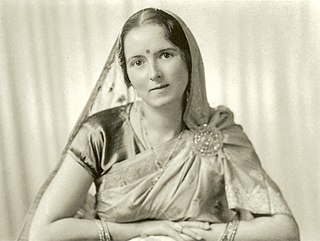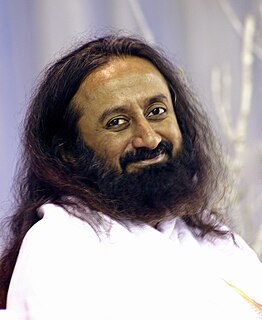 W
WAnukulchandra Chakravarty, popularly known as Sree Sree Thakur, was a spiritual leader and the founder of Satsang, in Deoghar.
 W
WMahavatar Babaji is the name given to an Indian yogi by Yogiraj Lahiri Mahasaya, and several of his disciples, Sri Yukteswar Giri, Baba Nasib Singh Ji, Ram Gopal Muzumdar, Swami Kebalananda, and Swami Pranabananda Giri who reported meeting him between 1861 and 1935. Some of these meetings were described by Paramahansa Yogananda in his 1946 book Autobiography of a Yogi, including a report of Yogananda's own meeting with the yogi. Another account was given by Sri Yukteswar Giri in his 1894 book The Holy Science. According to Sri M's autobiography, Babaji was Lord Shiva. In the second to last chapter of his book, he mentions Babaji changing his form to that of Lord Shiva. All of these accounts, along with additional reported meetings, are described in various biographies. According to Yogananda's autobiography, Babaji has resided for at least hundreds of years in the remote Himalayan regions of India, seen in person by only a small number of disciples and others.
 W
WMahanambrata Brahmachari was a Hindu monk who headed the Mahanam Sampraday in present-day Bangladesh. A yogi and monk of Mahauddharan order, a school of Bengal, he was a philosopher, writer and religious master.
 W
WSavitri Devi Mukherji was a French-born Greek fascist, Nazi sympathizer, and spy who served the Axis powers by committing acts of espionage against the Allied forces in India. She was later a leading member of the Neo-Nazi underground during the 1960s.
 W
WPrabhu Jagadbandhu was a religious leader of Bengal. He spent much of his life meditating and preaching in the Sri Angan ashram in Faridpur, British India. His teachings inspired the founding of a revival movement within Bengal Vaishnavism in the last decade of the 19th century and later the Mahanam Sampraday denomination. His devotees believe that he is Lord Sri Krishna and Chaitanya Mahaprabhu.
 W
WShyama Charan Lahiri, best known as Lahiri Mahasaya, was an Indian yogi, guru and a disciple of the Kriya Yoga master Mahavatar Babaji. In 1861, he was chosen by his guru to revive the yogic science of Kriya Yoga to the public after centuries of its guarding by masters. He was unusual among Indian holy people in that he was a householder: marrying, raising a family, and working as a government accountant, he lived with his family in Varanasi rather than in a temple or monastery. Throughout his life, he spread Kriya naturally and rarely sponsored any organizations; nonetheless, his pious living attracted followers, and he became the guru of many advanced Kriya disciples, such as Panchanan Bhattacharya and Swami Sri Yukteswar Giri. For his exceptional lifestyle as an "Ideal yogi-householder", he became a spiritually inspirational figure and achieved a substantial reputation among 19th century Hindu religionists.
 W
WAnandamayi Ma was an Indian saint and yoga guru, described by Sivananda Saraswati as "the most perfect flower the Indian soil has produced." Precognition, faith healing and miracles were attributed to her by her followers. Paramahansa Yogananda translates the Sanskrit epithet Anandamayi as "Joy-permeated" in English. This name was given to her by her devotees in the 1920s to describe her perpetual state of divine joy.
 W
WChaitanya Mahaprabhu (pronounced [sri.ˈt͡ʃɔiˌt̪ɔnːo mɔɦaˑprob̤u]; IAST: Śrī Kŕśńà Caitanya Mahāprabhu, Sanskrit pronunciation: [ɕriː t͡ɕɐit̪ɐnjɐ mɐɦaːprɐb̤u]) was a 15th century Indian saint considered to be the combined avatar of Radha and Krishna by his disciples. Chaitanya Mahaprabhu's mode of worshipping Krishna with ecstatic song and dance had a profound effect on Vaishnavism in Bengal. He was also the chief proponent of the Vedantic philosophy of Achintya Bheda Abheda Tattva. Mahaprabhu founded Gaudiya Vaishnavism. He expounded Bhakti yoga and popularized the chanting of the Hare Krishna Maha-mantra. He composed the Shikshashtakam.
 W
WMeera, better known as Mirabai and venerated as Sant Meerabai, was a 16th-century Hindu mystic poet and devotee of Krishna. She is a celebrated Bhakti saint, particularly in the North Indian Hindu tradition.
 W
WNayakanahatti Thipperudra Swamy,, also referred as Tippeswamy, Thippeswamy or Thippeswami, was an Indian Hindu spiritual Guru, and social reformer. He is revered by both his Hindu and Muslim devotees.
 W
WNeem Karoli Baba or Neeb Karori Baba, known to his followers as Maharaj-ji, was a Hindu guru and a devotee of the Hindu deity Hanuman. He is known outside India for being the spiritual master of a number of Americans who travelled to India in the 1960s and 70s, the most well-known being the spiritual teachers Ram Dass and Bhagavan Das, and the musicians Krishna Das and Jai Uttal. His ashrams are in Kainchi, Vrindavan, Rishikesh, Shimla, Neem Karoli village near Khimasepur in Farrukhabad, Bhumiadhar, Hanumangarhi, Delhi in India and in Taos, New Mexico, US.
 W
WRamakrishna Paramahamsa, born Gadadhar Chattopadhyaya, was an Indian Hindu mystic and religious leader in 19th-century Bengal. Ramakrishna experienced spiritual ecstasies from a young age, and drew from several religious approaches, including devotion toward the Goddess Kali and observance of elements from Tantra, Bhakti, Vaishnava, and Advaita Vedanta, as well as dalliances with Christianity and Islam. He held that the world’s various religious traditions represented “so many paths to reach one and the same goal." His followers came to regard him as an avatara, or divine incarnation, as did several prominent Hindu scholars of his day.
 W
WSwami Bhaskarananda Saraswati (1833–1899) was a noted 19th-century sannyasin and saint of Varanasi, India. He wandered over India for thirteen years before settling in Anandabag near the Durga Mandir, in 1868. A Sanskrit and Vedic scholar turned ascetic of Dashanami Dandi sannyasi order, many kings visited him to seek advise, and he also reported be an advisor counsel to Kashi Naresh, today his samadhi shrine is situated at Durga Kunda, adjacent to the historic Durga Mandir in Varanasi.
 W
WPrabhat Ranjan Sarkar also known as Ánandamúrti or Bábá ("Father") to his disciples, was a spiritual Guru, philosopher and composer of 5018 songs mostly in the Bengali language. He founded Ananda Marga in 1955 as a spiritual and social organisation that continues to offer instruction in meditation and yoga.
 W
WRavi Shankar is an Indian yoga guru, a spiritual leader. He is frequently referred to as "Sri Sri" (honorific), Guru ji, or Gurudev. From around the mid 1970s, he worked as an apprentice under Mahesh Yogi, the founder of Transcendental Meditation. In 1981, he split from the Transcendental Meditation (TM) and founded the Art of Living Foundation.
 W
WAdi Shankaracharya was an Indian philosopher and theologian whose works had a strong impact on the doctrine of Advaita Vedanta. He founded four mathas ("monasteries"), which are believed to have helped in the historical development, revival and propagation of Advaita Vedanta.
 W
WSai Baba of Shirdi, also known as Shirdi Sai Baba, was an Indian spiritual master who is regarded by his devotees to be a manifestation of Sri Dattaguru and identified as a saint and a fakir. He was revered by both his Hindu and Muslim devotees during, as well as after his lifetime.
 W
WBunleua Sulilat was a Thai/Isan/Lao mystic, myth-maker, spiritual cult leader and sculpture artist. He is responsible for creating two religious-themed parks featuring giant fantastic sculptures made of concrete on the banks of the Mekong river near Thai-Lao border: Buddha Park on the Lao side, and Sala Keoku on the Thai side.